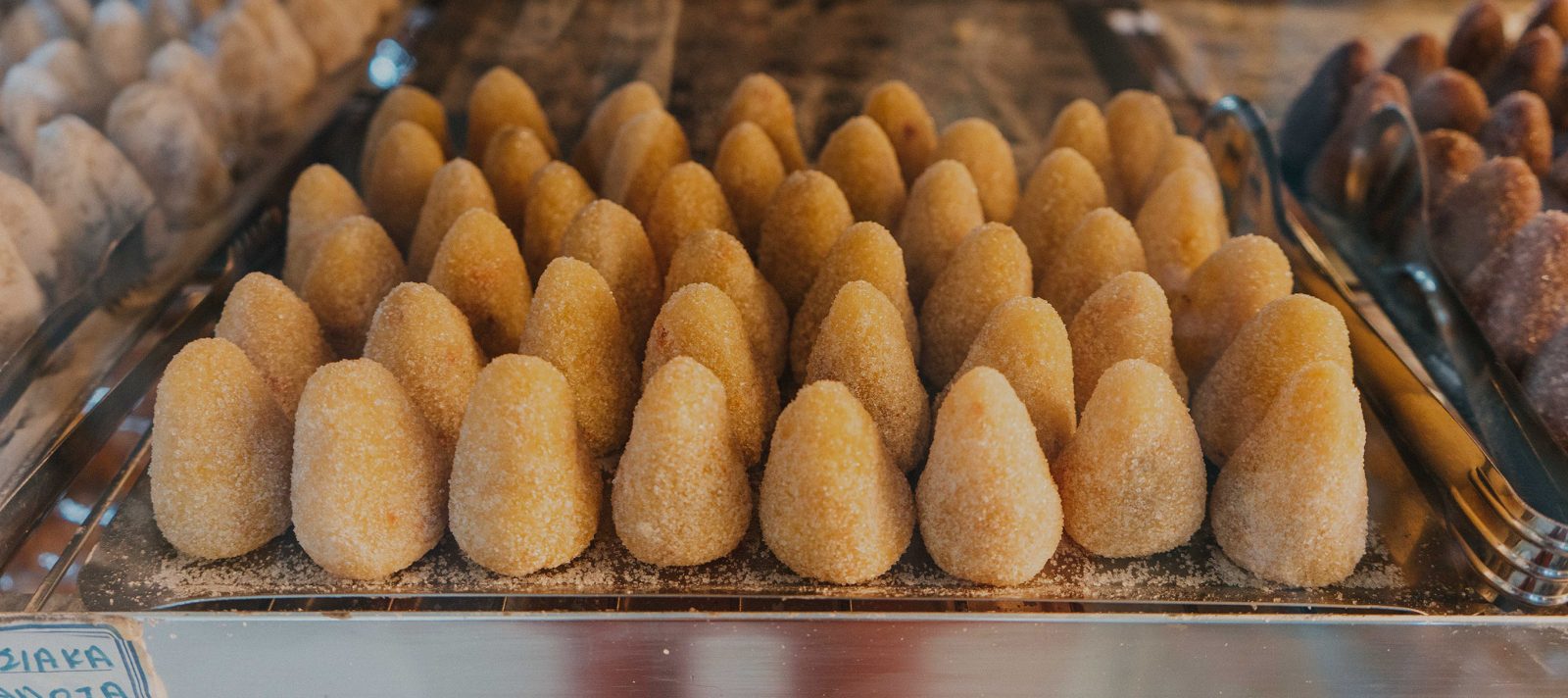

Eat these 9 hyper-local dishes when you visit Sifnos
Words & images by Sofia Levin
Last updated 18.02.2022
The tiny island of Sifnos is responsible for Greece’s first celebrity chef, time-honoured dishes cooked in ceramic pots and food that keeps culinary traditions alive.
For a small island, Sifnos has a huge reputation among foodies. In part it’s thanks to chef Nikolaos Tselementes, who was born in Sifnos but ventured to other parts of Europe and America to hone his cooking skills. Widely considered Greece’s first celebrity chef, he penned influential cookbooks in the early 1900s, marrying bechamel with Greek classics to create dishes like moussaka. Tselementes is honoured at the start of September during a three-day festival on the island. His name is synonymous with “cookbook” in Greek, and indeed you’ll spot his in most Greek households. Sifnos is also known for its pottery, which local ceramicists have been trading since 3000 BC. Here are eight local dishes that are difficult to find outside of Sifnos.

SAVOURY SIFNOS
1. Revithia (Chickpea Stew)
Don’t for a second think that this chickpea dish is bland – it’s perhaps Sifnos’ most treasured meal and is reserved for lazy Sundays with friends and family. Chickpeas, onion, olive oil, water, salt and bay leaves are cooked overnight in a traditional skepastaria clay pot in communal wood-fired ovens. The revithia is collected the following day after church and eaten for lunch. You can also find it at traditional tavernas around the island, but try to order it on a Sunday – the time-consuming cooking process means that versions eaten on other days of the week might be cooked using shortcuts and lack the depth of a Sunday revithia.

2. Mastelo (Easter Goat or Lamb Stew)
Sifnos’ traditional Easter recipe is slow-cooked in a ceramic pot. Free-range goat or lamb is cut into portions and washed in wine. Vines are added to the bottom of the mastelo – the name of the earthenware pot – to form a grid, with the meat placed on top. More wine is added, along with salt, pepper and lots of fresh dill, before the meat is cooked. It should fall off the bone when served.
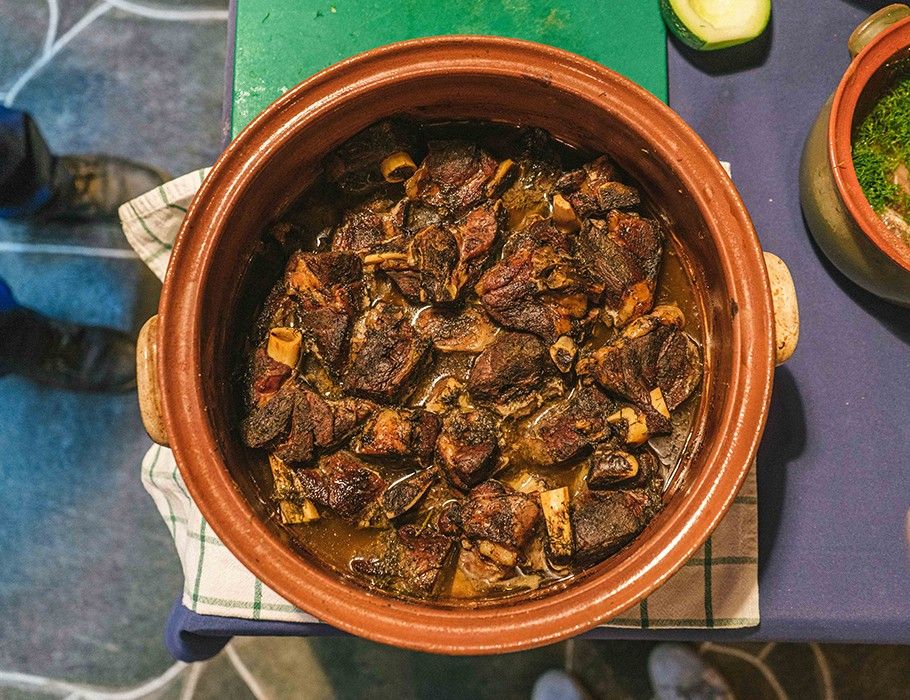
3. Kaparosalata (Caper Salad)
Labelled a salad but more like a dip, kaparosalata is made from the abundant caper plants that grow wild all over Sifnos. Caper berries are dried and mixed with caramelised onion, herbs, spices and sometimes mashed potato. Some tavernas blend it together until it’s smooth but chunky, but the best versions are those that are the least dip-like, with lots of salty capers that pop in your mouth in pools of olive oil. Kaparosalata is served with bread as an accompaniment to a main meal and is likely to be the taste you’ll associate with Sifnos for years to come.
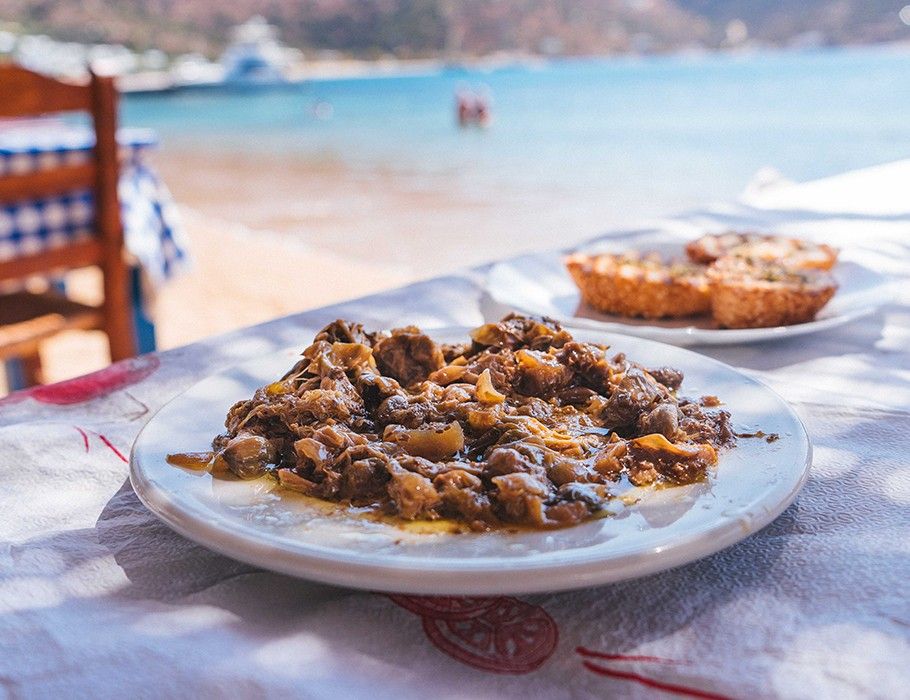
4. Manoura (Local Cheese)
This distinctive, semi-firm cheese is made from the milk of wild goats and sheep. It's salted and aged in sediment from red wine barrels, which give it a recognisable purple exterior that’s also peppered with dried herbs. The longer it’s aged, the more bite it has. Manoura is crumbly and chalky, with slight tang from the goat’s milk. Make like a local and wash it down with raki.
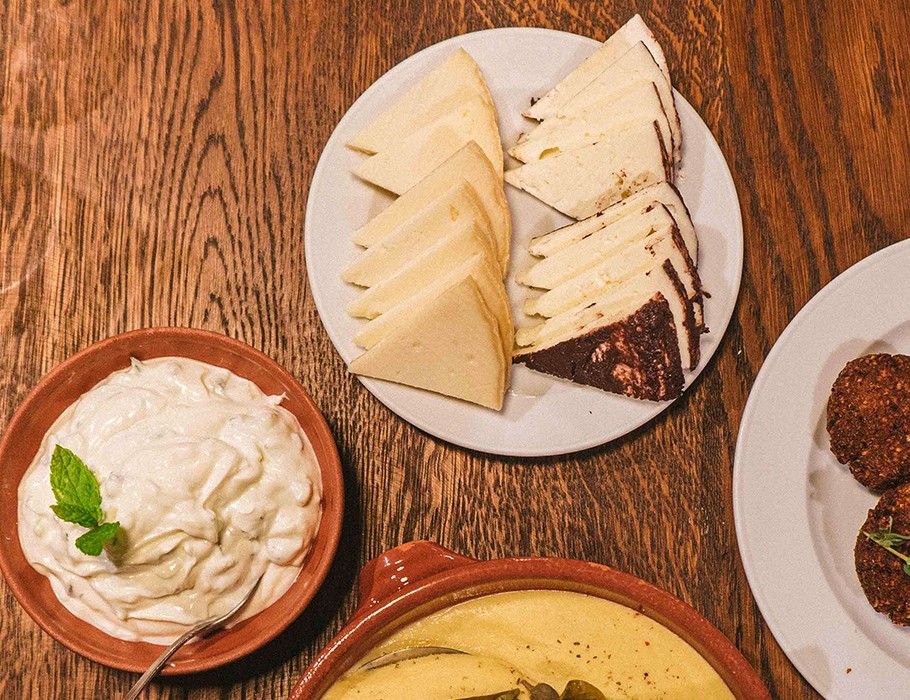
5. Revithokeftedes (Fried Chickpea Balls)
These chickpea croquettes are made from chickpeas, boiled potatoes, onions and fresh herbs (usually marjoram, parsley, dill and sometimes fresh mint). Everything gets pulsed together, rolled into a ball and then deep-fried until golden. Traditionally they are made for a special occasion, but now that kitchen blenders exist, you can find them all over Sifnos.
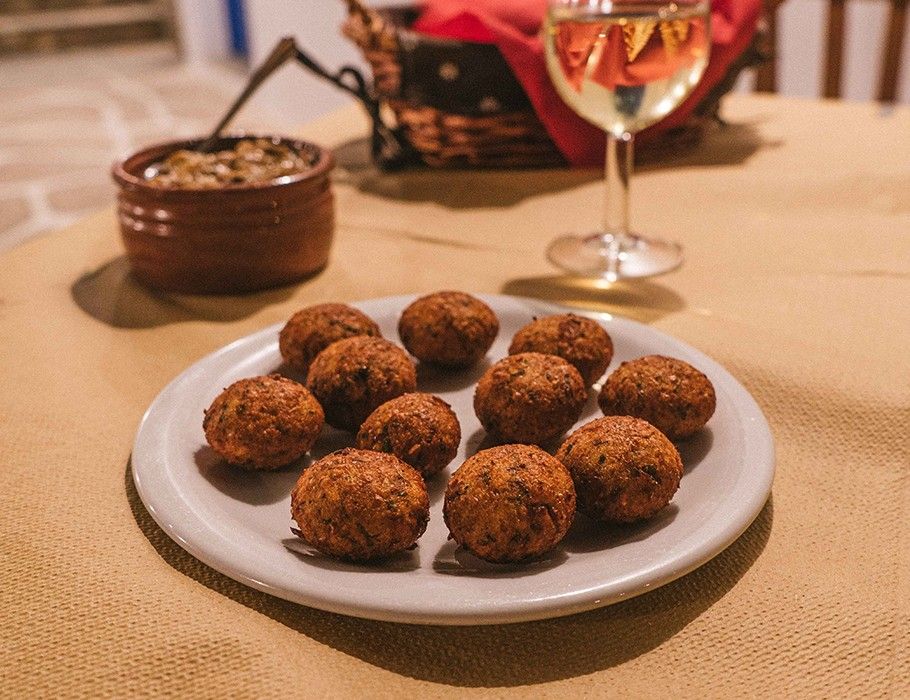
SIFNOS FOR SWEET TOOTHS
6. Melopita (Sifnian Honey Pie)
You’ll spot beehives all over Sifnos, which explains why this honey pie is so popular. It’s a light cake made from local honey and cheese (usually mizithra), and sometimes ricotta. Melopita resembles a baked cheesecake with a base made from biscuit crumbs. It’s usually garnished with cinnamon and an extra drizzle of honey.
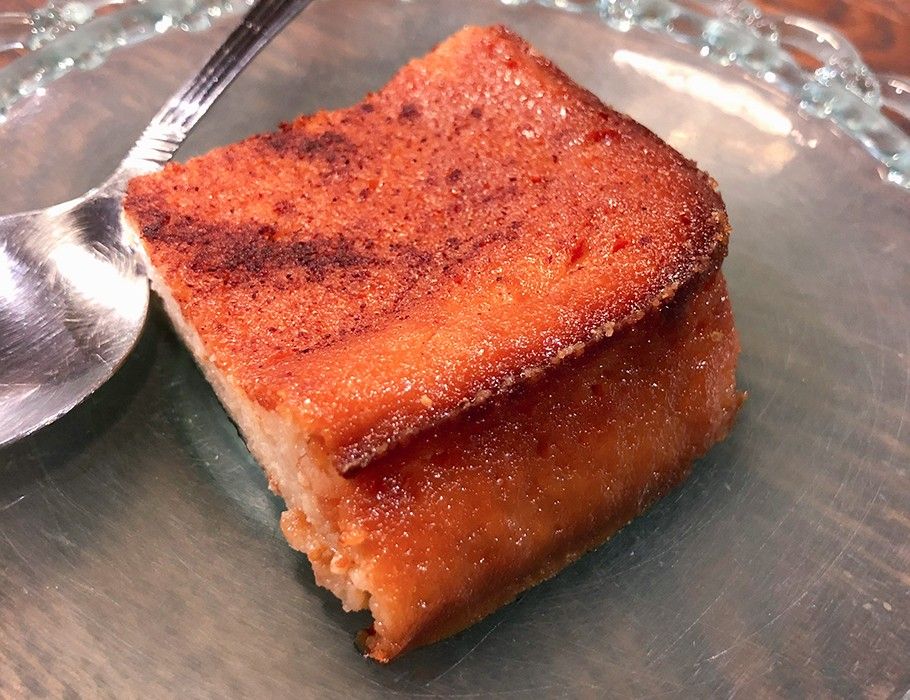
7. Amygdalota (Sifnian Almond Biscuits)
Most biscuits on Sifnos are made with almond flour, but these are a specialty. They're rolled to a round point with an indent at the bottom – supposedly to mimic a Roman nose – and are covered in sugar. They're wonderfully soft and taste mildly of marzipan.
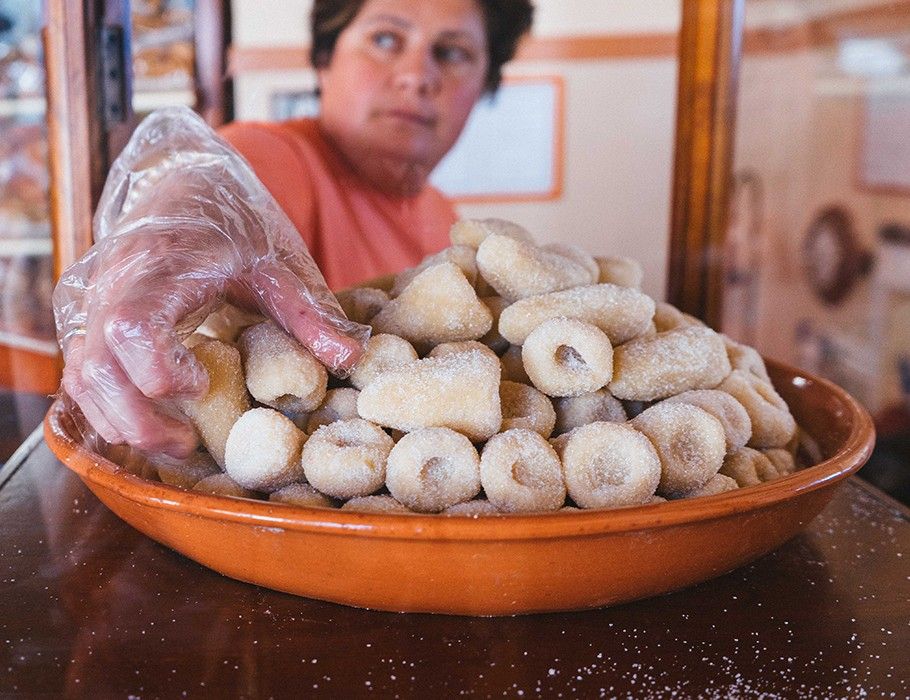
8. Halvadopita (Nougat Wafers)
Originating on the nearby island of Syros, it’s worth stopping by Theodorou, a family-run sweet shop in Artemonas, to buy some individually packaged halvadopita. Soft discs of honeyed nougat are studded with almonds and held together with rice-paper wafers. Take more than you think you want home with you – you’ll regret it if you don’t.
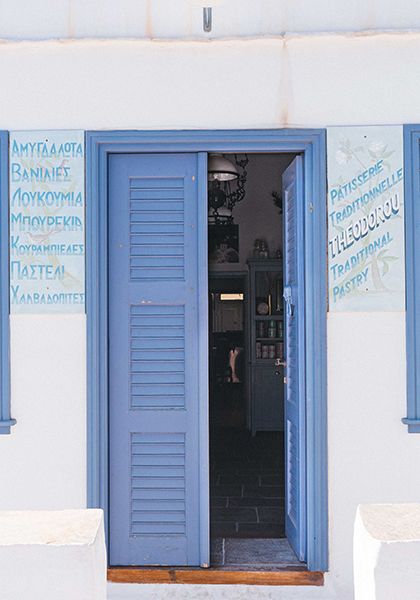
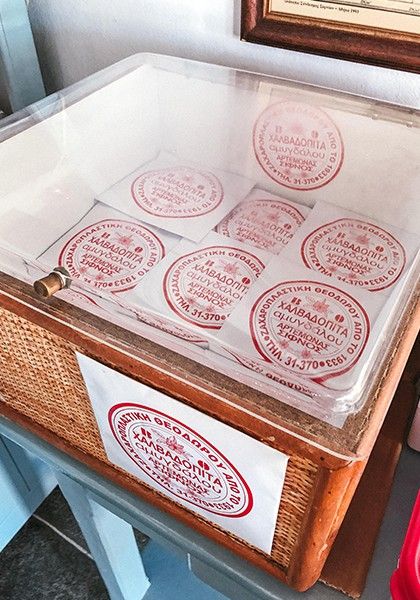
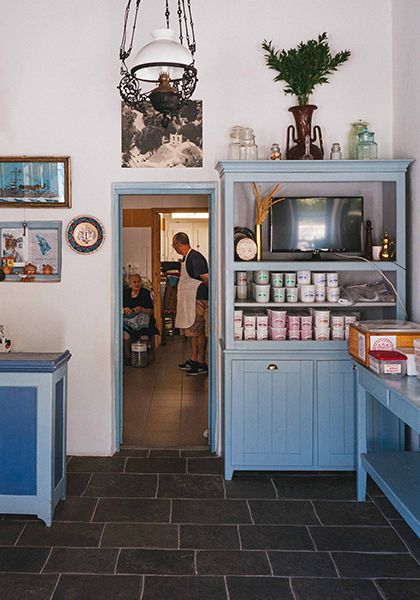
9. Ypovrichio (Submarine Sweet)
This sticky sugar paste is made from mastic resin and sometimes flavoured with fruit, vanilla, rose or bergamot. It’s plunged into cold water on a teaspoon to soften and eaten after a meal. The idea is to gradually lick it off the spoon in between dunks, the same way you might with a spoonful of ice cream that’s a little too big to eat in one go.
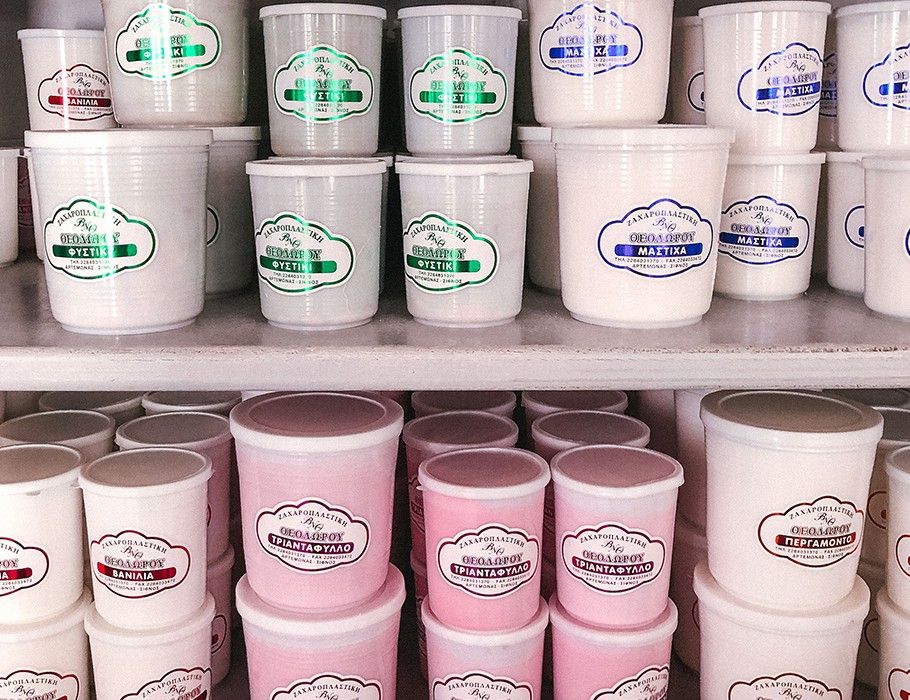
Join the Eat Curiously Movement
Subscribe to the food newsletter that goes deeper.
